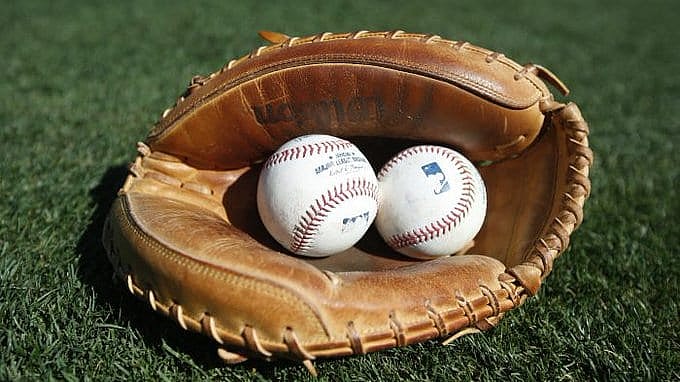
It’s no secret that the New York Yankees have been struggling in the hitting department with eight players, including the Yankee bench, that are hitting .200 or on the interstate. For instance, the quick bat of Clint Frazier is hitting .149, switch hitter Aaron Hicks is hitting .198, Brett Gardner is hitting .190, and Mike Ford is hitting just .103. Why is this? Most of it is probably because of the weather, or they haven’t found their timing yet. Or is there some other sinister reason?
There could be a reason that is not proven, and that reason is the new baseballs being used this year that are making pitchers look good and hitters look horrible. As of the beginning of this week, hitters across all of baseball are hitting .236/.309/.396 – a .705 OPS. That’s a good 10 points lower than expected for April and May when hitters are not at their best. For the New York Yankees, it’s not even that good. They are hitting .222/.320/.381.
As we approach mid-May, the New York Yankees haven’t been totally decimating by their lack of hitting, although they have surely lost several games because of a lack of hitting. They haven’t been burned because of some surprisingly good pitching recently highlighted by some timely hitting, primarily by Giancarlo Stanton. In the most recent homestand the Yankees went 7-2. Some of this is due to good pitching and some because the other teams aren’t hitting either.
“Certainly, offensively I know there’s more in there for us,†manager Aaron Boone said Sunday after the Yankees’ 3-2 win over the Nationals. “We’re gonna find our stride.â€
But finding that stride may be made more difficult by the newly introduced baseball used this season. Home runs are down. It seems that many balls hit off the bat at a high velocity are dying on the warning track, just feet from being a home run. The balls that would go over the head of infielders are now being caught at a higher rate, causing far too many hitters hitting into double plays.
Is the culprit the new baseball? The bottom line here is that this baseball being used today isn’t the baseball MLB said it would be. MLB announced before spring training that they would alter the baseball for the 2021 season. Keeping the size, lowering the weight somewhat, and that the change according to the Associated Press, would not impact the ball’s velocity.
In the memo to all 30, MLB clubs explained the difference in the baseballs but did not mention anything about the drag of the new balls. The drag on the ball is resulting in less successful hitting this season.
According to Mark Feinsand, an executive reporter at MLB.com:
MLB’s balls are hand-sewn by workers at the Rawlings factory in Costa Rica, which can result in minor deviations in production. The league requires all baseballs to have a coefficient of restitution (COR) — in simple terms, the bounciness of the ball — ranging from .530 to .570, but the average COR had trended toward the top of that range in recent years.
Rawlings has loosened the tension on the first of three wool windings within the ball. The company’s research believes this adjustment will bring the COR down slightly, while also lessening the ball’s weight by 2.8 grams without changing its size. According to the AP, MLB does not anticipate the weight change to impact pitchers’ velocity.
It appears that MLB’s change to the baseball has backfired. Balls being hit out into the outfield are dying. Rob Arthur, a data scientist who spends his days examining the various changes to the baseball, explained the changes best.
“(I)magine hitting a balloon and a dodgeball with a bat, swinging with the same force and angle each time. When you hit the balloon, it will explode off the bat at high velocity. But as it travels, air resistance will rapidly slow it down, and it won’t go very far. A heavier dodgeball, by contrast, won’t come off the impact as quickly, but it will also keep traveling once you hit it.
“A ball with reduced mass would behave a little more like the balloon and a little less like the dodgeball: higher exit velocity and less carry. And that’s exactly the pattern in the data: at the upper end, exit velocities are up by around 0.8 mph, which ought to boost fly-ball distance substantially (by around four feet). But the reduced carry from lower weight cancels that out, and average fly-ball distance has actually dropped slightly. (In raw terms, distance is down about five feet from 2019, but if you adjust for the weather, it may only be down a foot or two.)â€
Here is the home run rate per fly ball in the 2020 season -14.8%; for this season, the same rate is 13.8%, and it’s not because of the weather; these are figures for over 6,000 balls hit during April for both years. For pitchers, fastballs stay up in the zone for longer than in previous years, and curveballs are dropping more.
According to the Athletic, Aaron Judge has said the pitch movement is what he has noticed about the new baseball.
“When you square it up, it’s still a home run, right?†Judge said. “So people are still hitting ’em. I’m seeing (Giancarlo Stanton) light up the scoreboard with 118, 120 mile per hour (exit velocities), so I don’t think it’s really changing too much. They’re just moving all over the place, really.â€
The new ball can’t be blamed for the hitting malaise of the New York Yankees or any other team. There are still mechanics, timing, stance, and approach, but still, it is a factor that is too new to analyze fully; it will take a full season to do that. Stay tuned.
EmpireSportsMedia.com’s Columnist William Parlee is a member of the Society for American Baseball Research. Follow me on Twitter @parleewilliam.
More about: New York Yankees